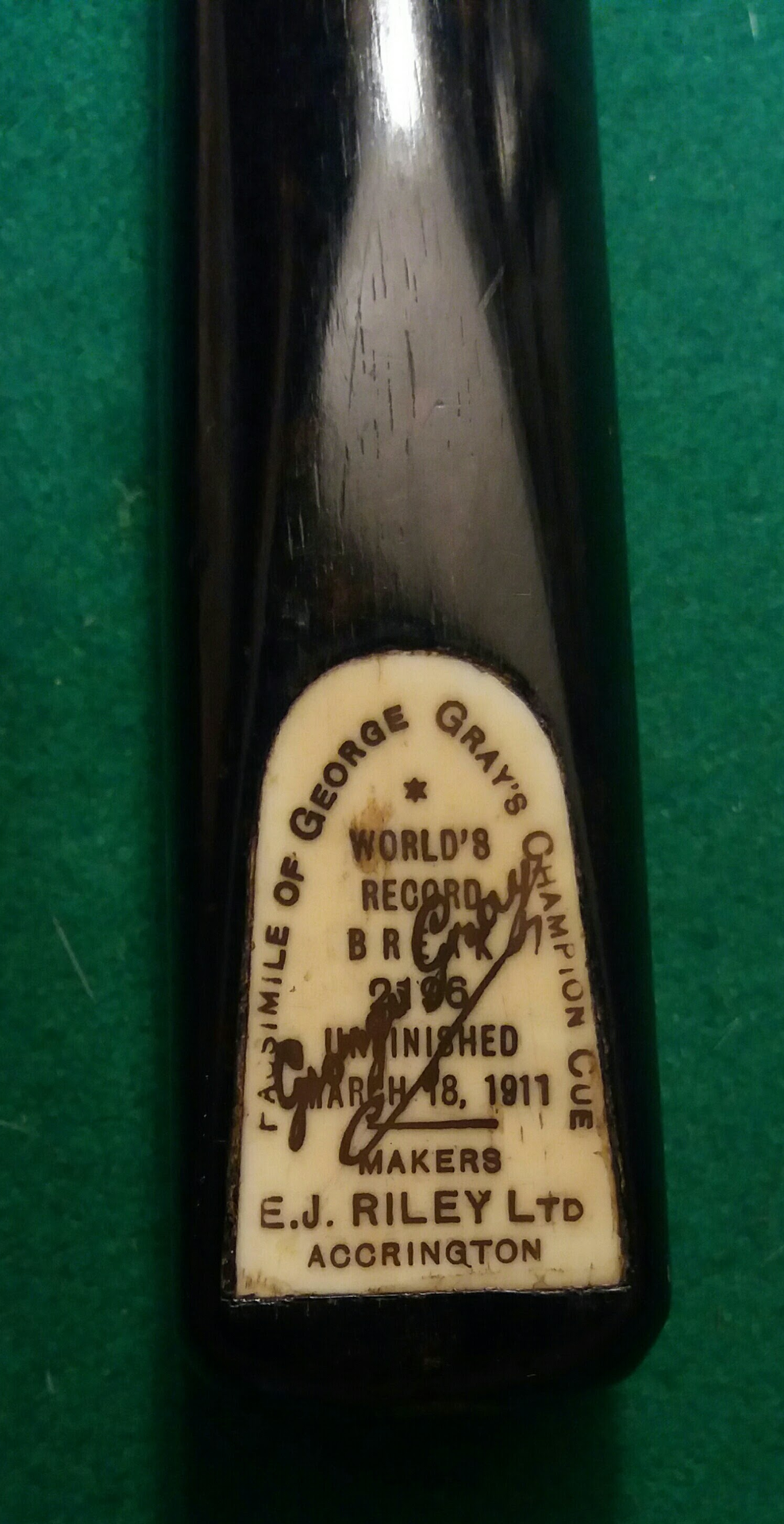
More Cues:
-
Adam Cues
-
Three Cue Illustrations
-
Edward Diggle Cues
-
Melbourne Inman Cues
-
Claude Falkiner Cues
-
Cue Manufacturing
-
George Nelson Cues
-
Tom Newman Cues
-
W J Peall Cues
-
Tom Reece Cues
-
H W Stevenson Cues
-
Willie Smith Cues
-
Burroughes & Watts
-
The Big Four
-
Dos and Donts
-
The Lindrum Selection of Cues
-
Collect or Tinker
-
Fifth Sidney Smith Cue
-
Twenty Years Ago
-
Make Your Top Ten Choice
-
George Chenier
-
Notable Achievements
-
Eleven years in the making
-
Buying an old cue
-
Cues I Rarely Mention
-
Travelling for a Purchase
-
The Flowing Scotsman
-
Joe Davis Cues
-
My Peradon Cues
Collecting Cues, Do’s and Don’ts
One of the best aspects of collecting Billiards and Snooker memorabilia is that occasionally you get the opportunity to get hold of something that someone you know wants.
Perhaps I better back track for a moment, I have got to know many people who have acquired hard to find artefacts from the past such as Old Cues, Old Books, Cigarette Cards and so on. These people usually require something for their collection and may have other items that I would like.
Networking with people as far apart as the West Country and Scotland can turn up some interesting items but can also lead to building up friendships and the opportunity to share information and yet more contacts.
I have recently bought two old cues from a gentleman in London and another from a friend of mine in Bolton.
The cue from Bolton is a Burroughes and Watts Ye Olde Ash Cue. The unusual thing about the cue is the wording on the badge, as you are no doubt aware the usual wording mentions that the Ye Olde Ash Cues are from the London workshop of Burroughes and Watts. In this case the badge implies that the cue was at least sold in “Newcastle on Tyne. I am curious as to whether the company made this type of cue with badges that refer to their other sites in such as Glasgow and Sheffield.
Returning to networking, I recently enjoyed searching out a cue for a gentleman from Huddersfield in West Yorkshire, this gentleman was a particular collector of Charles Dawson items and wanted to get hold of a Burroughes and Watts Charles Dawson Champion Cue. It took some time but I managed to get a very nice example for reasonable price with a complete badge and lacquer on the butt. The gentleman was delighted with his acquisition and as he is a high quality Billiards player himself will give the cue a try to see how it felt to play Billiards at the turn of the 20th Century.
I myself would like to get a Tom Newman cue with the Word Newman printed in inverted commas on the badge and a front splice of beech on the butt. I have seen a number of these cues but the owners rarely wish to part with them, which I of course respect.
The most common type of Tom Newman cue has his signature reproduced on the badge along with his 1,370 break commemorated and the words, “champion cue” inscribed on the badge. It seems strange to go into such detail about what a cues badge should say but to a cue collector these details are as vital as the correct number of perforations on a stamp are to a stamp collector.
Other factors to bear in mind are the overall condition of the cue, the length of the cue and the tip size of the cue.
Going back to the turn of the last century it was not unusual for cues to be 55 inches in length but by 1910 most cues were manufactured about 58 inches long. It was rare for cues to be made with a tip size of less than 10 millimetres in diameter.
I have a George Gray cue made by Riley’s of Accrington from 1911 which is 58 inches long and has an eleven millimetre tip size.
This does not mean that shorter cues were not available as a special order, but as a rule of thumb if I was to be offered two cues that are almost identical, I would almost always purchase the longer one.
I hope that if you are considering starting a collection of old cues the suggestions that I have written in this article are useful to you. I am not really looking for very many more cues for my collection but if you have something to sell let me know, I may be able to put you in touch with a potential buyer? Let me know what you have and how much you want or even whether you would consider a swap and I will see what I can do.
David Smith
Cues n Views
Related cue images








